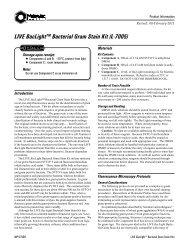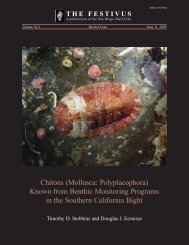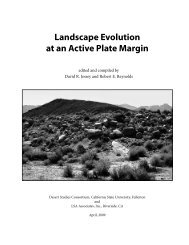Vertical Vegetation Structure Below Ground: Scaling from Root
Vertical Vegetation Structure Below Ground: Scaling from Root
Vertical Vegetation Structure Below Ground: Scaling from Root
Create successful ePaper yourself
Turn your PDF publications into a flip-book with our unique Google optimized e-Paper software.
<strong>Vertical</strong> <strong>Vegetation</strong> <strong>Structure</strong> <strong>Below</strong> <strong>Ground</strong>: <strong>Scaling</strong> <strong>from</strong> <strong>Root</strong> to Globe 353Fig.5.Schematic diagram of the relationship between mean annual precipitation (MAP)and plant rooting depths. The drawings of individual plants approximate the medianrooting depths for three broad growth form categories along the MAP gradient. Themaximum rooting depths depicted were those for 95% of all plants in the respectiveprecipitation range,i.e.,only 5% of plants in that growth form category had deeper rootsthan indicated by these lines. Also shown are the changing plant density and changingproportions of annual herbs,perennial herbs,and semi-shrubs/shrubs along the gradient,<strong>from</strong> deserts and shrublands dominated by woody plants to grasslands dominated byherbaceous plants. (Schenk and Jackson 2002b, reproduced with permission)by phreatophytic trees in arid lands,which tend to be the most deeplyrooted plants on Earth (Table 1).4 Spatial <strong>Structure</strong> of <strong>Root</strong> Systems in Plant Populationsand CommunitiesStudies of root system architecture in soil typically involve plants growingin monospecific stands or in more or less diverse plant communities,whichmeans that these root systems are grown in competition with roots <strong>from</strong>other plants. Studies on root systems of single plants in the absence ofcompetition are typically done in pots,and observations <strong>from</strong> such studiesmay be difficult to extrapolate to natural settings. Until quite recently,fewstudies had addressed the effects of root competition on spatial root distributions.In a review of such studies,Fitter (1987) found little evidence forsignificant effects of root competition on spatial root distributions. Suchevidence began to accumulate in the 1990s,beginning with a seminal studyby Mahall and Callaway (1991) on roots of two desert shrub species, Larreatridentata and Ambrosia dumosa. <strong>Root</strong> elongation rates of both specieswere found to significantly decrease when roots encountered Larrea roots,
















